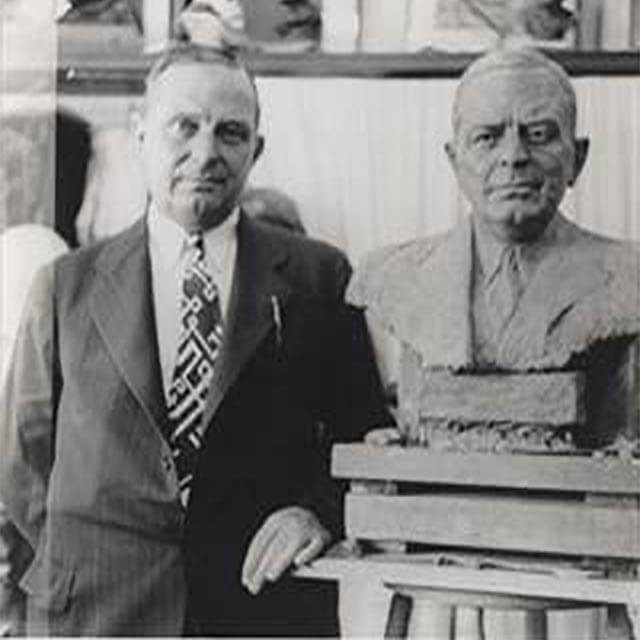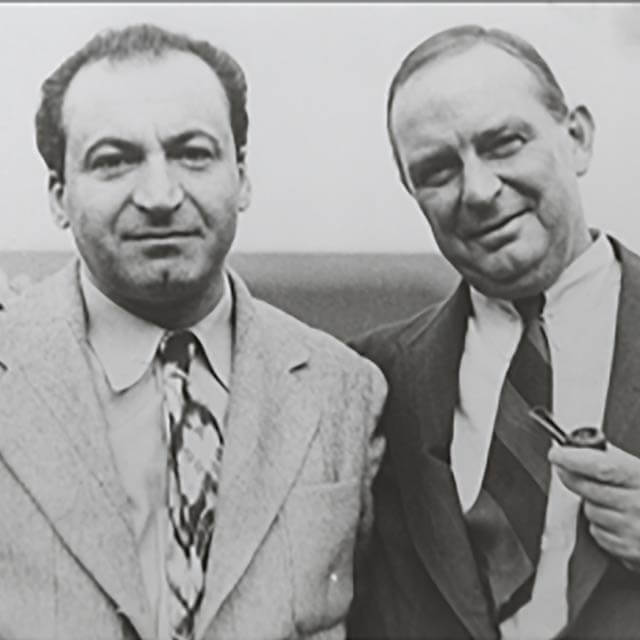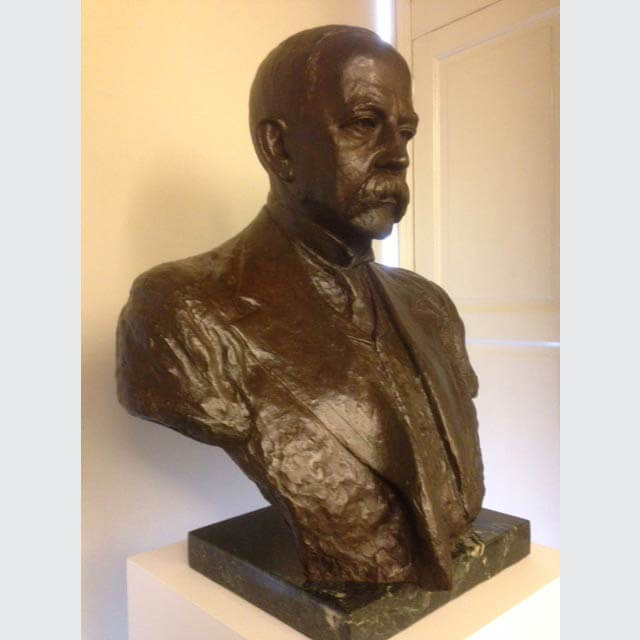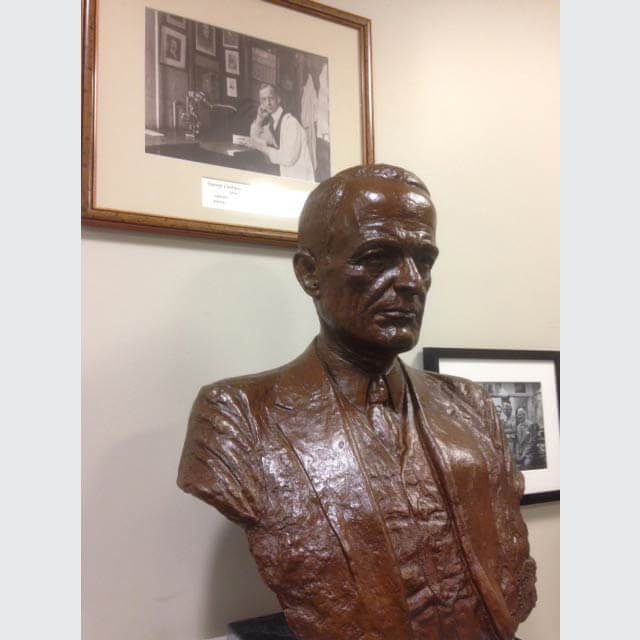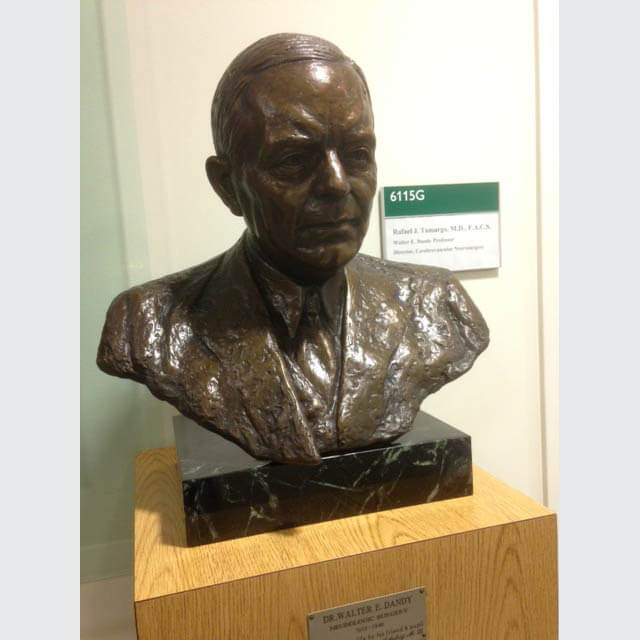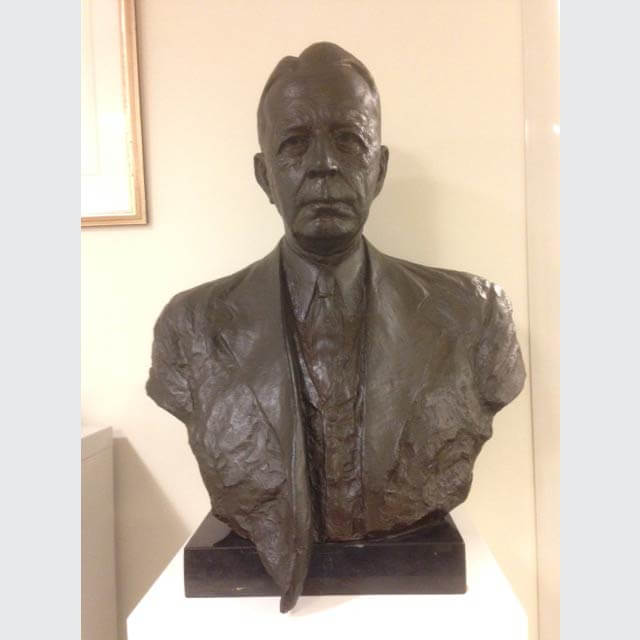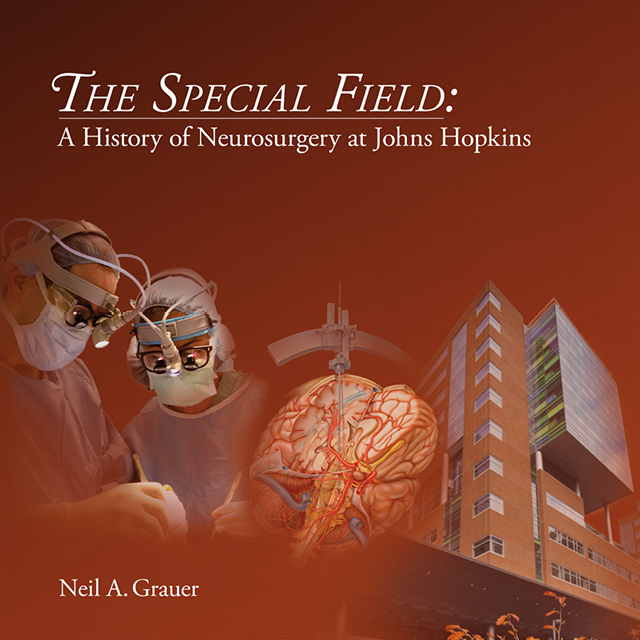At long last, after decades languishing in storage — and, in some cases, threatened with disposal — four impressive bronze busts of leading luminaries in the history of Johns Hopkins Medicine have been brought “home.”
The busts, weighing more than 100 pounds apiece, were all sculpted by Emil Seletz (1907–1999), a gifted amateur artist who was the former head of neurosurgery at what now is Cedars-Sinai Medical Center in Los Angeles and a professor of neurological surgery at the University of Southern California’s medical school.
Between 1936 and 1937, Seletz was a resident in neurosurgery at Johns Hopkins under Walter Dandy (1886–1946), a renowned giant in the field and essentially its co-founder, whom he idolized.
In addition to Dandy, the busts depict William Osler (1849–1919), the founding head of Johns Hopkins’ Department of Medicine and first physician-in-chief of The Johns Hopkins Hospital; Harvey Cushing (1869–1939), an Osler protégé and acknowledged father of neurosurgery, which he proclaimed a separate specialty while on the Johns Hopkins faculty; and Howard Naffziger (1884–1961), a Cushing trainee at Johns Hopkins who later became head of surgery at the University of California, San Francisco, and then chair of its first department of neurosurgery.
The busts are the gift of Seletz’s son, attorney James Seletz of Scottsdale, Arizona. James is an admirer of Nicholas Theodore, head of the Neurological Spine Center in the Johns Hopkins Department of Neurosurgery, who joined the faculty last July.
“Father loved Hopkins,” James says. “Dandy was his medical hero in life, and Daniel Chester French [creator of the Lincoln Memorial’s mammoth statue] was his hero in sculpture. There’s no place on earth he would have preferred for his sculptures to be.”
A Chance Encounter
Luckily for Johns Hopkins — and the legacy of Seletz’s father — a chance encounter a decade ago between James Seletz and Theodore saved three of the busts from possible relegation to a dumpster.
Theodore then was chief of the Division of Spinal Disorders as Phoenix’s Barrow Neurological Institute. A patient of his had been injured in a work-related accident and hired James to represent him in a workers’ compensation lawsuit, Theodore recalls.
When James came to Theodore’s office to discuss the case, he happened to notice a biography of Dandy resting on the surgeon’s bookshelf.
“He opened the book to a page where there’s a picture of Walter Dandy standing beside his bust made by Emil Seletz, and in the background, Emil Seletz is sort of sheepishly hiding behind it.
“So Jim is telling me this story about his father and Dandy, and says, ‘Where are those busts now?’ I said, ‘Why are you asking me? I have no idea,’” recalls Theodore.
It turned out that years earlier, James had donated a copy of the Dandy bust to the institute, along with the busts his father had done of Cushing and Naffziger. He thought an institution devoted to the field all three men had brought into being would want their likenesses — yet he’d never seen them put on display.
“I called the foundation. There must have been a change in leadership, and nobody had ever heard of them,” Theodore says. “So we finally went into the basement, and in the corner, covered with dust, and with sheets thrown over them just like you’d see in the movies, were these three busts — the Dandy, the Cushing and the Naffziger. I think they were marked for disposal.”
Theodore promptly rescued the busts and put them in his office — with the likenesses of Cushing and Dandy, who had a famously acrimonious rivalry — staring grimly at each other.
“It was a small office, but it was really funny, given the history of their stormy relationship, to have them both looking at each other with these sort of stern faces,” Theodore says, chuckling.
When Henry Brem, director of Johns Hopkins’ Department of Neurosurgery, went to Phoenix to recruit Theodore and saw the busts, he told Theodore that if he came to Johns Hopkins, he had to bring the busts with him.
“When I took the position at Hopkins, I asked Jim — specifically since the busts had not been displayed at Barrow — if I could take them to Hopkins. He said it would be wonderful if they could come home,” says Theodore.
What’s more, when Theodore decided to come to Johns Hopkins, James wrote to Ronald R. Peterson, then president of The Johns Hopkins Hospital, and offered to donate not only those three busts, but one that his father also had made of Osler. It long had been in private storage. He told Theodore that he wanted the Osler bust to be “a gift to mark” his arrival at Johns Hopkins.
James’ only stipulation for his gift was that his father’s artwork be displayed, not packed away in storage. That request has been fulfilled.
Andrew Harrison, cultural properties archivist for Johns Hopkins’ Alan Mason Chesney Archives, had special, identical pedestals made for each bust. The Osler bust now is on display in the Osler Textbook Room on the second floor of the Billings Administration Building. It is the room in which Osler wrote his landmark 1902 text, The Principles and Practice of Medicine, and houses other Osler artifacts.
The life-size Cushing bust now is in the office of Brem, who is the Harvey Cushing Professor of Neurosurgery. Brem also has the Naffziger bust. The life-size Dandy bust is in the office of Rafael Tamargo, who holds the Walter E. Dandy, M.D., Professorship in Neurosurgery. A second, smaller copy of the Dandy bust remains in Theodore’s office.

